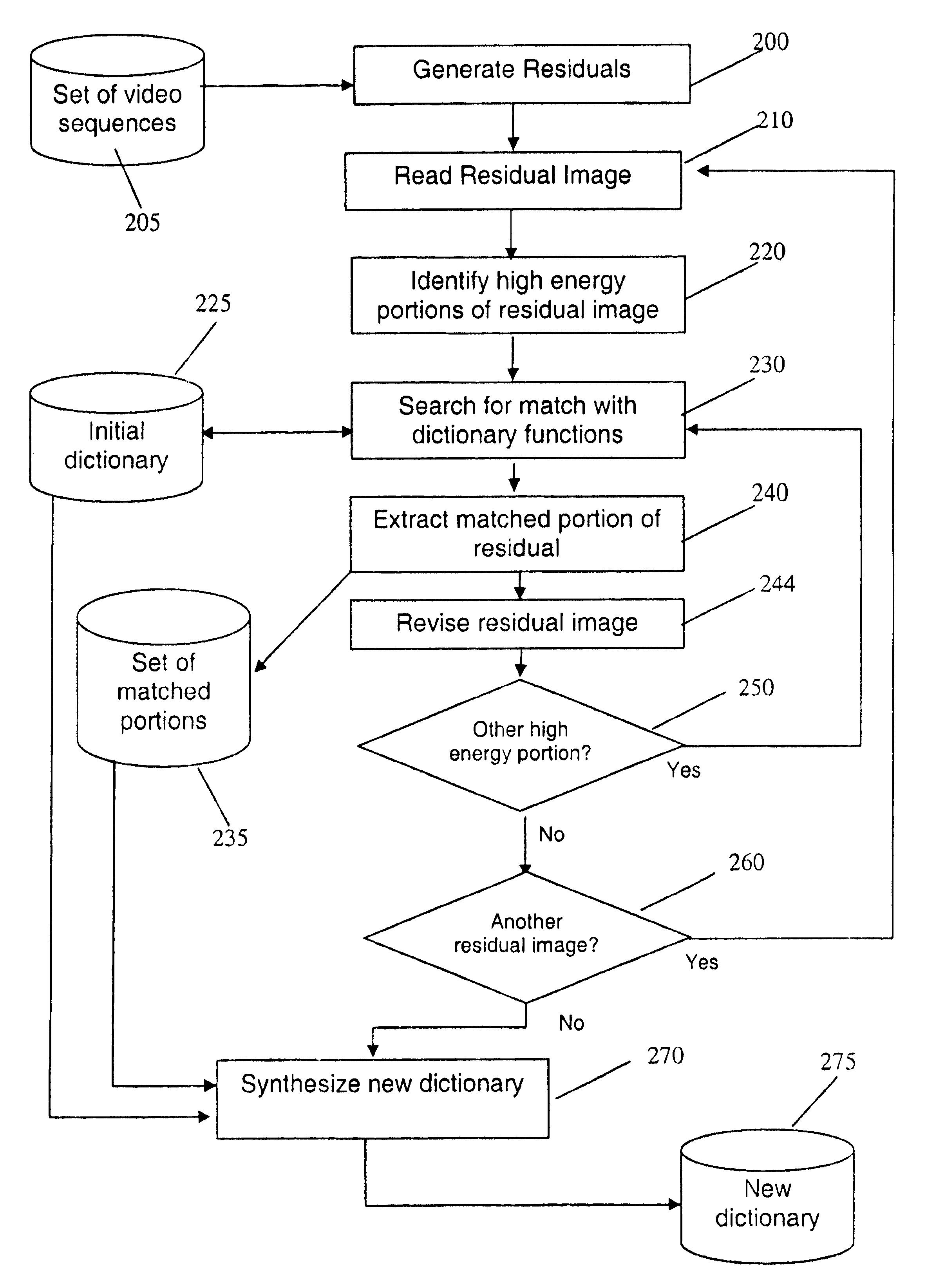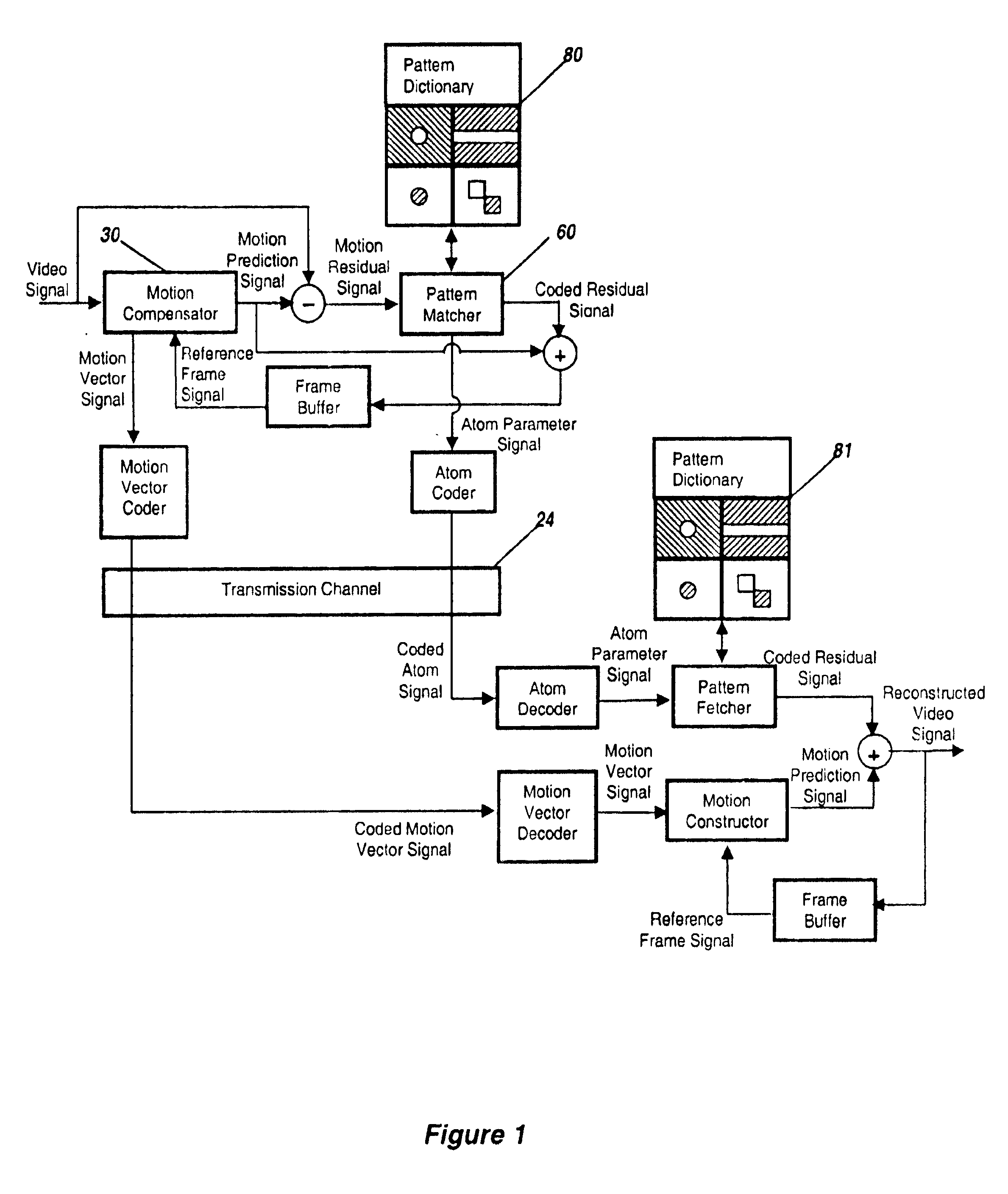Dictionary generation method for video and image compression
a generation method and video and image technology, applied in the field of dictionary functions, can solve the problems of high computational overhead and time-consuming, and achieve the effect of improving the signal-to-noise ratio of video
- Summary
- Abstract
- Description
- Claims
- Application Information
AI Technical Summary
Benefits of technology
Problems solved by technology
Method used
Image
Examples
Embodiment Construction
[0019]This invention relates to the creation of dictionaries for compressing video, and in particular matching pursuit (MP) video encoding systems. An illustration of an MP video compression scheme is shown in FIG. 1. Motion compensation is identified and encoded by the motion compensator 30, and the residual signal is then “matched” by a pattern matcher 60 to one of several functions in the pattern dictionary 80. This residual signal is then coded as an “atom” and sent to the receiver, along with the motion vector, through the transmission channel 24. Upon receipt, the “atom” is decoded and the matched pattern is retrieved from a local copy of the pattern library 81. The final video signal is recreated by recombining the decoded motion vector and the retrieved library pattern.
[0020]An example of a dictionary for this kind of video compression system is the set of Gabor functions. These have been described by C. DeVleeschouwer and B. Macq, “New Dictionaries for matching pursuits vid...
PUM
 Login to View More
Login to View More Abstract
Description
Claims
Application Information
 Login to View More
Login to View More - R&D
- Intellectual Property
- Life Sciences
- Materials
- Tech Scout
- Unparalleled Data Quality
- Higher Quality Content
- 60% Fewer Hallucinations
Browse by: Latest US Patents, China's latest patents, Technical Efficacy Thesaurus, Application Domain, Technology Topic, Popular Technical Reports.
© 2025 PatSnap. All rights reserved.Legal|Privacy policy|Modern Slavery Act Transparency Statement|Sitemap|About US| Contact US: help@patsnap.com



